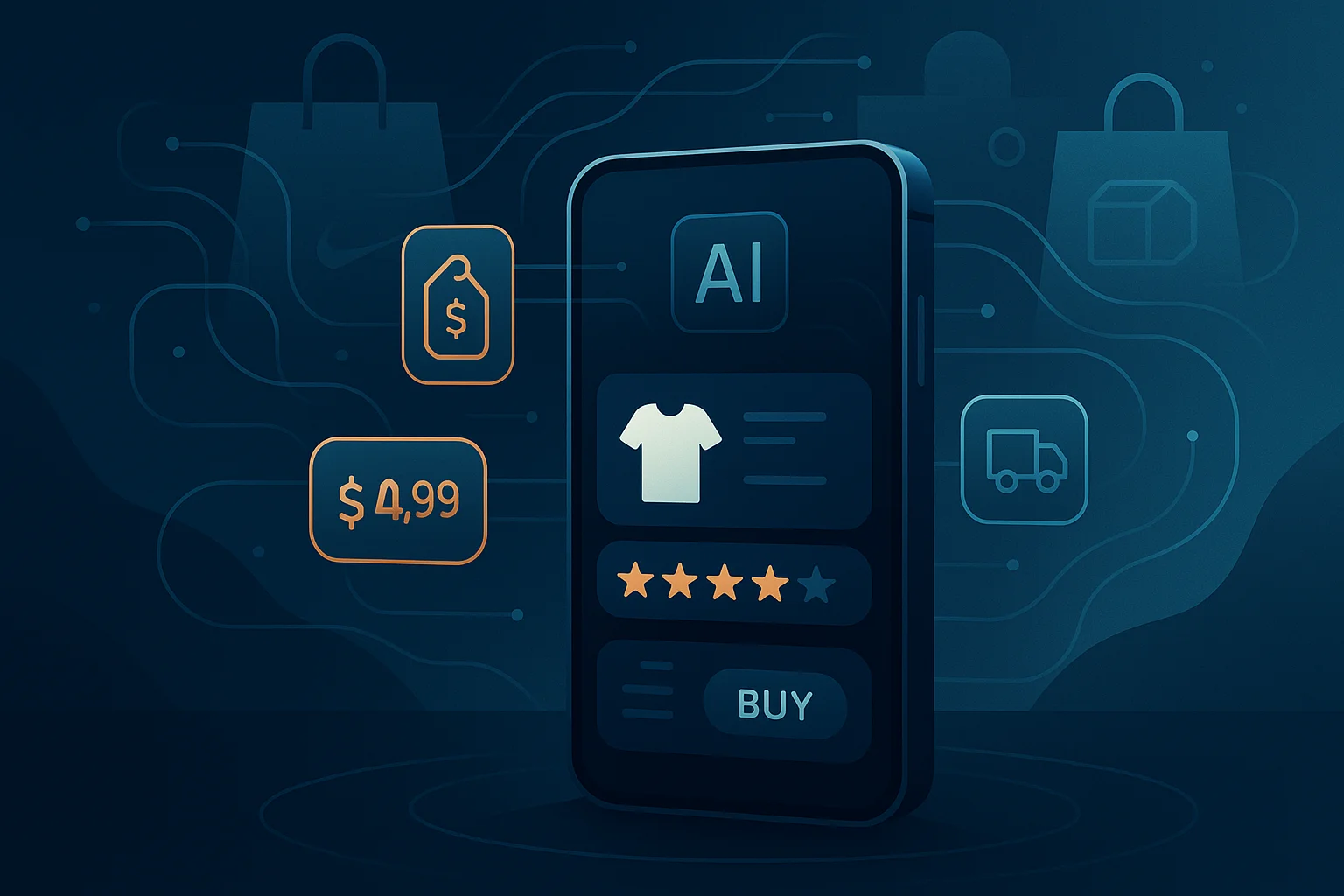When Machines Shop: Preparing Your Business for AI-Powered Buyers
AI-powered algorithms now drive everyday purchases, shifting retail and business strategies as data, transparency and consumer trust reshape commerce

Your coffee runs out, and Alexa quietly reorders your usual brand. Except this time, she doesn’t. The algorithm has found a cheaper alternative with better reviews, and your loyalty to that familiar brand just got bypassed without you even knowing. This isn’t some distant future scenario – it’s happening right now in homes across the country, and it represents the early stages of a fundamental change in how purchases get made.
We’ve already handed over countless small decisions to algorithms without much thought. Netflix picks what we watch next. Google Maps chooses our route to work. Investment apps rebalance our portfolios. The next logical step – letting these systems handle actual purchases – is already underway through subscription services, auto-replenishment programmes and smart home devices.
The Quiet Handover
We don’t run ads or share your data. If you value independent content and real privacy, support us by sharing.
The psychology of delegation reveals something telling about which buying decisions people surrender first. Research published in Frontiers in Psychology shows that consumers’ perceived autonomy and self-efficacy actually enhance their trust in AI decision-making. People don’t mind giving up control when they feel they’re still in charge of the bigger picture.
Low-stakes, routine purchases get delegated first – coffee pods, printer ink, pet food. These decisions feel safe because the downside is minimal. But the threshold keeps rising. Amazon’s new AI-enhanced Alexa+ promises to handle grocery ordering, meal delivery and event tickets , pushing into territory that was unthinkable just a few years ago.
The difference between trusting a platform like Amazon and trusting an algorithm to choose for you comes down to transparency and control. People accept algorithmic choices when they understand the logic behind them and feel they can intervene if needed. This mirrors broader patterns in how algorithms have already taken over human decision making in countless other areas.
When Algorithms Become Customers
For businesses, this creates an entirely new playing field. Brands that spent decades perfecting emotional appeals to human customers now need to speak algorithm. Industry experts suggest that while AI won’t completely replace human purchasing behaviour, it will significantly influence decision-making processes through data analysis capabilities that humans simply can’t match.
What influences an AI buyer differs dramatically from what sways a human one. Algorithms care about structured data, not storytelling. They weigh price, delivery time, availability, return policies and customer ratings with mathematical precision. Brand heritage means nothing if your product metadata isn’t optimised for machine consumption.
This creates winners and losers in unexpected ways. A premium brand with poor product data might lose to a generic competitor with excellent technical specifications. Small manufacturers with limited marketing budgets could compete effectively if they understand how to structure information for algorithmic consumption.
Industry Tipping Points
Retail is already reorganising around algorithm-friendly signals rather than traditional shelf space. Walmart’s new AI-powered shopping assistant promises enhanced capabilities for reordering and service bookings, while Amazon continues refining systems that predict what customers need and when.
Insurance presents an even more dramatic example. AI agents comparing policies care only about coverage, cost and claim history. The friendly local agent relationship that once drove business decisions becomes irrelevant when algorithms optimise purely on mathematical factors.
Healthcare and financial services face similar pressures. AI systems selecting treatments or investment products based on data analysis rather than provider relationships create new competitive dynamics where technical optimisation matters more than traditional marketing. Business leaders looking to stay ahead must understand these key AI tools for driving growth and competitive advantage.
The Technical Arms Race
Maintaining human connection becomes challenging when machines make the purchase. Some companies are exploring hybrid approaches – designing experiences that satisfy both algorithmic logic and human emotions. But this dual fluency requires new skills and investment priorities.
Major consulting firms are already adapting , with companies like Globant rolling out subscription models for AI-powered services that blend algorithmic efficiency with human oversight.
The question of market concentration looms large. If AI decision-making favours whoever best optimises for algorithmic preferences, will this accelerate winner-takes-all dynamics? The companies with the best technical infrastructure and data organisation could dominate not through superior products, but through superior machine communication.
What Business Leaders Need to Know
The immediate priority is auditing your product data for AI readability. This means structured information, comprehensive specifications, clear pricing models and optimised metadata. If an algorithm can’t easily parse what you’re offering, you won’t be considered.
The regulatory situation remains unsettled. Recent congressional discussions about AI regulation highlight tensions between federal oversight and state-level consumer protection laws. Similar debates are occurring in the UK , where ministers are developing more comprehensive regulatory frameworks.
Transparency requirements will likely emerge as consumers demand understanding of how AI agents make decisions on their behalf. Businesses need to prepare for increased scrutiny of algorithmic decision-making processes and be ready to explain how their products get selected or rejected by AI systems.
The Human Factor
Despite the convenience appeal, some consumers push back against algorithmic autonomy. Studies show that personality traits like neuroticism and gender differences affect trust levels, with women showing less trust and stronger reactions to AI errors.
The unresolved tension centres on control versus convenience. People want the benefits of automated decision-making without surrendering final authority. This suggests successful AI shopping systems will emphasise user control and transparency rather than complete automation. Understanding how to rebuild consumer trust and emotional engagement in AI-powered offerings becomes crucial.
Problems arise when AI optimisation conflicts with human values. An algorithm might choose the cheapest option when a person would prefer supporting local business, or select based purely on efficiency when ethical considerations matter to the buyer.
The Next Chapter
The real irony is that as machines become better at understanding human preferences, the critical skill becomes understanding machine preferences. Companies that master dual fluency – speaking both to human hearts and algorithmic logic – will define commerce’s next chapter.
This isn’t about choosing between human and machine customers. It’s about designing for both simultaneously, recognising that the relationship between people and their AI agents will determine who succeeds. The winners won’t be those who abandon human appeals for technical optimisation, but those who find ways to satisfy both audiences without compromising either.
The machine shopping revolution is already here. The question isn’t whether it will reshape commerce, but whether your business is ready for customers who never see your marketing, never visit your store and make decisions based purely on data you may not even know you’re providing.
